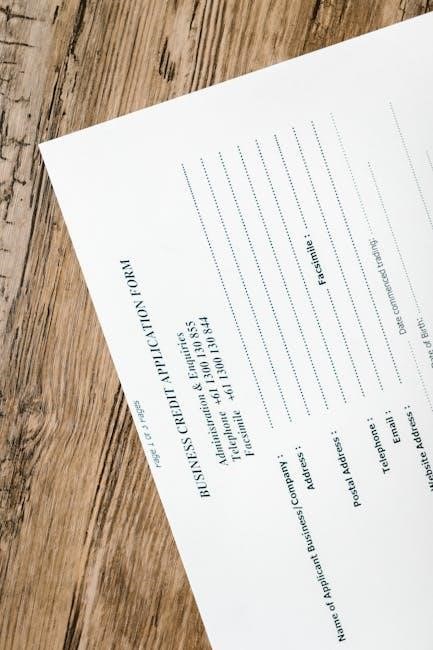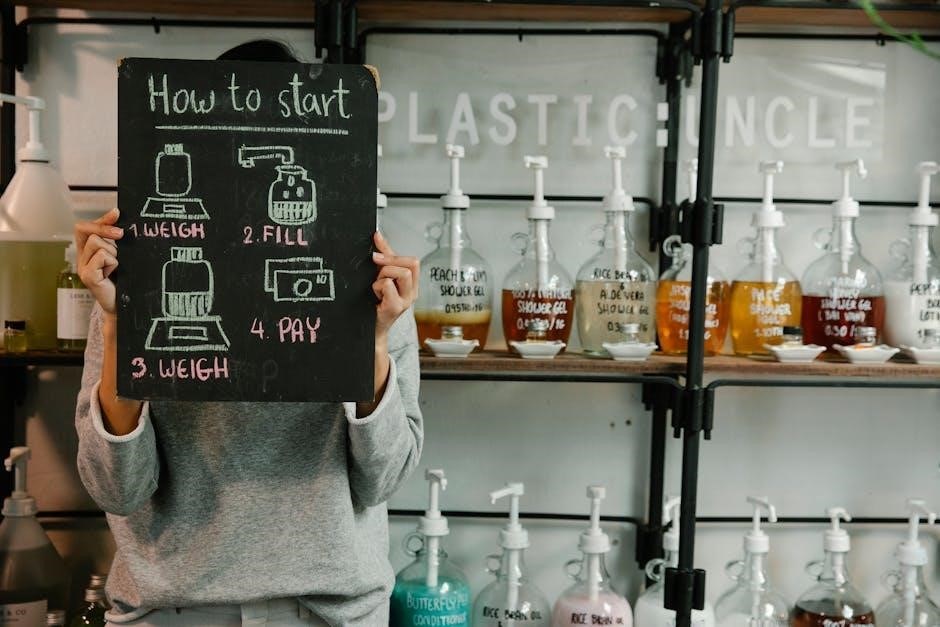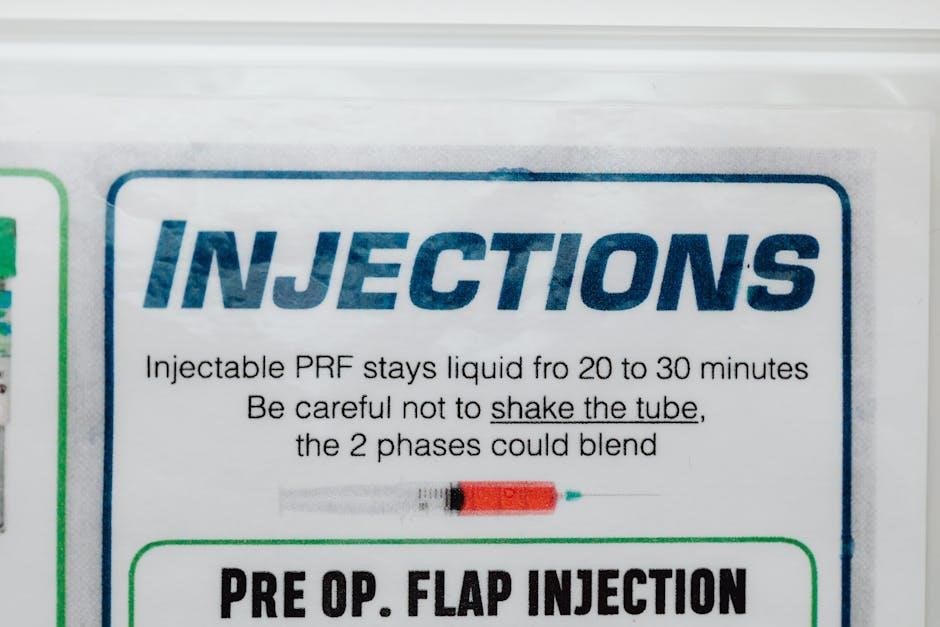Welcome to Scratcheshappen, your ultimate guide to DIY car scratch repair. Learn how to fix minor to deep scratches with touch-up paint, primers, and professional tools. This comprehensive guide covers everything from assessment to final polishing, helping you restore your car’s appearance like a pro. Follow step-by-step instructions for flawless results and save money on professional repairs.
1.1 Overview of Scratcheshappen
Scratcheshappen provides a comprehensive DIY solution for car scratch repair, offering color-matched primers, touch-up paints, and professional tools. The system emphasizes precision and invisibility, guiding users through assessment, preparation, and application. It caters to all scratch depths, ensuring a seamless finish. By following detailed instructions, users achieve professional-looking results without costly repairs. Practice and proper technique are key to success. The process includes step-by-step guides for primer application, paint matching, and clear coat finishing, ensuring a flawless repair experience.
1.2 Importance of Following Instructions
Following Scratcheshappen instructions is crucial for achieving professional-looking results. Proper techniques ensure the repair blends seamlessly with the surrounding paint; Deviating from guidelines can lead to uneven finishes or paint damage. Practice on a separate surface first to master application methods. Safety precautions, like using gloves and working in a well-ventilated area, are essential. Adhering to drying times and layering techniques prevents errors. By following each step meticulously, you ensure a flawless repair that maintains your car’s value and appearance. This attention to detail is key to a successful DIY repair experience.

Assessing the Scratch
Assessing the scratch involves determining its depth and selecting the appropriate repair method. This step ensures effective and lasting results for your car’s paint restoration.
2.1 Identifying Scratch Depth
Identifying the depth of a scratch is crucial for effective repair. Light scratches affect only the clear coat, while deeper ones may penetrate the paint or even the metal. Use a fingernail test: if the scratch catches, it’s deep. For precise assessment, use a scratch depth gauge or consult a professional. Understanding the depth helps determine the right tools and materials needed for a successful repair, ensuring the process is both efficient and long-lasting.
2.2 Determining the Right Repair Method
Determining the right repair method depends on the scratch’s depth. Light scratches may only require touch-up paint, while deeper ones need sanding and primer. For moderate scratches, use a rubbing compound to smooth the area. Deep scratches involving metal or plastic may need professional attention. Always assess the damage thoroughly to choose the appropriate technique. Using the wrong method can worsen the damage, so match your approach to the scratch’s severity for the best results. Proper tool selection is also key to a successful repair.
2.3 Tools and Materials Needed
Gather essential tools and materials for a successful scratch repair. Start with fine-grit sandpaper, a microfiber cloth, and a rubbing compound. Use touch-up paint matching your car’s color and a primer for deeper scratches. A paint pen or spray can is ideal for application. Safety gear like gloves and goggles is recommended. Additional items include masking tape, a buffing pad, and a clear coat for finishing touches. Organize these supplies to ensure a smooth and efficient repair process. Proper preparation ensures professional-quality results.
Preparing the Area
Start by washing and drying the car to remove dirt and grease. Lightly sand the scratched area to smooth rough edges. Mask surrounding areas to protect them during repair. Clean the surface thoroughly to ensure proper paint adhesion. This step ensures a clean, smooth base for applying primer and paint, leading to a seamless repair.
3.1 Cleaning the Affected Area
Cleaning the affected area is crucial for effective repair. Use mild soap and water to remove dirt, oil, and wax. For tougher stains or rust, apply a wax and grease remover or 220-grit sandpaper. Ensure the surface is dry and free of contaminants before proceeding. This step ensures proper adhesion of primer and paint, making the repair more durable and less visible. Avoid using harsh chemicals that might damage the paint further. A clean surface is the foundation of a successful scratch repair.
3.2 Removing Rust and Debris
After cleaning, inspect the area for rust or debris. Use 220-grit sandpaper or a wire brush to gently remove rust spots, feathering the edges to blend with the surrounding paint. For stubborn rust, apply a rust remover and rinse thoroughly. Remove any loose particles or debris with a clean, damp cloth. This step ensures a smooth surface for primer and paint adhesion, preventing further damage and ensuring a durable repair. Always wear gloves and safety goggles when handling abrasive materials.
3.3 Masking Surrounding Areas
Use painter’s tape and paper to mask areas surrounding the scratch, protecting them from paint and primer. Apply the tape carefully, ensuring it adheres tightly to avoid paint seepage. Cover trim, moldings, and glass with paper or plastic sheets. Press the tape firmly to create a seal, and inspect for any gaps. For intricate areas, use a credit card to press the tape into tight spaces. This step ensures precise application and prevents unwanted paint spread, maintaining the car’s original finish and details. Remove masks immediately after painting to avoid pulling the fresh paint.

Applying Primer
Applying primer is crucial for a smooth, durable finish. Use a high-quality primer matched to your car’s paint color. Apply thin, even coats, allowing each to dry before the next. This ensures proper adhesion and coverage, creating a strong base for the paint. Avoid over-application to prevent uneven surfaces. Follow manufacturer instructions for drying times to achieve professional results. Proper priming enhances paint appearance and longevity, making repairs nearly invisible. Always work in a well-ventilated area and use protective gear. Your car’s surface will be ready for paint after priming.
4.1 Choosing the Right Primer
Choosing the right primer is essential for effective scratch repair. Select a primer that matches your car’s paint color and type, ensuring proper adhesion and coverage. Avoid using enamel primer, as it can damage the surrounding paint. For metal surfaces, use a rust-inhibiting primer to prevent further damage. Apply primer only to bare metal or exposed areas, feathering edges for a seamless blend. Always check the product instructions for specific application guidelines. The right primer ensures a smooth, durable finish and proper paint adhesion, making your repair nearly invisible.
4.2 Application Techniques
Apply primer using thin, even coats to avoid pooling. Use a high-quality brush or applicator, feathering edges for a seamless blend. Work in small sections, ensuring complete coverage of the scratch area. Allow each coat to dry according to product instructions before applying the next. Avoid over-application, as excess primer can lead to unevenness. For best results, use a light touch and build up coverage gradually. Proper technique ensures a smooth surface for paint application and a professional-looking repair.
4.3 Drying Time and Preparation
Allow primer to dry completely, typically 20 minutes to an hour, depending on environmental conditions. Ensure the surface is dust-free and cool to the touch before proceeding. Once dry, gently inspect the area; additional coats may be needed for full coverage. Proper drying ensures a strong bond between primer and paint, crucial for a durable repair. Avoid rushing this step, as premature paint application can lead to uneven results and compromise the repair’s quality. Patience here ensures a professional finish.

Using Touch-Up Paint
Touch-up paint restores your car’s finish by precisely matching the original color. Apply thin coats, allowing each layer to dry before adding more for a seamless blend. Use tools like paint pens or spray cans for accuracy, ensuring the repaired area aligns with the surrounding paint. This step is crucial for achieving a professional-looking repair without the need for extensive repainting.
5.1 Selecting the Correct Paint Color
Selecting the correct paint color is vital for a seamless repair. Locate your vehicle’s color code, usually found in the driver’s side door jamb or under the hood. This code ensures the touch-up paint matches your car’s original finish precisely. Order pre-mixed paint or use a color-matching service to guarantee accuracy. Testing the paint on a discrete area first is recommended to confirm the match before applying it to the scratch. Proper color selection ensures the repair blends invisibly with the surrounding paintwork.
5.2 Application Methods
Apply touch-up paint using spray cans, paint pens, or brush bottles. For spray cans, shake well and spray thin, even coats from a distance. Paint pens and brushes allow precision for small scratches. Always apply in light, circular motions. Avoid pressing too hard, as this can remove basecoat. Let each coat dry completely before applying the next. For best results, work in a well-ventilated, dry area with stable temperatures. Use rubbing compound afterward to blend and polish the repaired area for a smooth finish. Allow the repair to cure fully before waxing.
5.3 Allowing Paint to Cure
After applying touch-up paint, let it cure completely. Minimum curing time is 20 minutes, but optimal results require 24-48 hours, depending on environmental conditions. Avoid exposure to moisture, direct sunlight, or extreme temperatures during curing. Once cured, apply clear coat if needed. Allow clear coat to dry as per instructions before buffing. Proper curing ensures durability and a seamless finish. Avoid rushing this step, as it’s crucial for the repair’s longevity and appearance. Letting it cure fully will ensure a professional-looking result.

Clear Coat Application
Apply clear coat in thin, even layers to protect the basecoat. Float it gently over the repaired area to avoid removing basecoat. Allow proper drying time between coats for a smooth, glossy finish.
6.1 Preparing for Clear Coat
Before applying clear coat, ensure the basecoat is fully dry and free of dust or debris. Lightly buff the area with a fine-grit sandpaper to create a smooth surface. Remove any sanding dust using a tack cloth or compressed air. This step ensures proper adhesion and a seamless finish. Proper preparation is crucial for achieving a professional-looking result. Always work in a well-ventilated area with minimal humidity for optimal paint performance.
6.2 Applying Thin Layers
Apply clear coat in thin, even layers to avoid peeling or unevenness. Use a steady hand and work in a well-ventilated, dust-free area. Allow each layer to dry for 10-20 minutes before applying the next. This ensures proper bonding and prevents solvent issues. For best results, float the clear coat over the basecoat without applying pressure, as excessive force can remove the underlying paint. Multiple thin layers will build up a durable, glossy finish. Always follow the product’s instructions for optimal results.
6.3 Avoiding Common Mistakes
Avoid applying too much clear coat at once, as it can pool and leave uneven streaks. Never touch the wet surface, as oils from your skin can damage the finish. Ensure the area is clean and free of dust before applying each layer. Overlapping or rushing the process can lead to peeling or hazing. Always wait the recommended drying time between coats. Proper preparation and patience are key to achieving a smooth, professional finish. Avoid these mistakes to ensure long-lasting, flawless results for your car’s paint repair.

Buffing and Polishing
Use a rubbing compound to smooth out imperfections, then polish with a clean microfiber cloth for a glossy finish. Buff in circular motions to blend the repair seamlessly.
7.1 Using Rubbing Compound
Apply a small amount of rubbing compound to a clean, damp microfiber cloth. Gently rub the scratched area in circular motions to smooth out imperfections. Focus on blending the edges with the surrounding paint. Avoid applying too much pressure, which could damage the clear coat. After buffing, wipe away any excess compound with a clean cloth. Allow the area to dry completely before proceeding to polish for a glossy finish. This step ensures a seamless repair and prepares the surface for final polishing.
7.2 Polishing for a Glossy Finish
Using a high-quality car polish and a dual-action buffer, apply moderate pressure in circular motions to the repaired area. This step removes minor imperfections and enhances shine. Work slowly, ensuring even coverage. Avoid excessive pressure, which could damage the clear coat. After polishing, inspect the area under different lighting to ensure a glossy, even finish. Buffing restores the original luster, making the repair nearly invisible. For best results, use a clean, soft cloth to wipe away any excess polish and reveal a flawless surface.
7.3 Final Inspection and Touch-Ups
After polishing, conduct a final inspection under bright, indirect light to spot any remaining imperfections. Use a touch-up pen or brush to address minor areas where paint may be uneven. Allow the repair to cure for at least 30 days before waxing. Regular waxing helps protect the paint and maintain the glossy finish. Ensure all steps are followed meticulously to achieve a seamless repair that blends with the surrounding paint, restoring your car’s original appearance effectively.

Advanced Repair Techniques
Master advanced methods for deeper scratches, including wet sanding, paint blending, and specialized tools. Achieve professional-level results with detailed techniques tailored for complex damage, ensuring seamless integration with the car’s original finish for a flawless appearance.
8.1 Dealing with Deep Scratches
Deep scratches require careful attention to restore your car’s surface. Start by assessing the depth to determine if paint or metal is exposed. Clean the area thoroughly to remove dirt and debris. For deep scratches penetrating the metal, apply a rust inhibitor to prevent corrosion. Use a filler or putty to fill the scratch, sanding it smooth with progressively finer grit sandpaper. Feather the edges to blend seamlessly with the surrounding paint. After sanding, prime and paint to achieve a flawless finish. Always work in a well-ventilated area and use protective gear. Patience and precision are key to a professional-looking repair.
8.2 Blending Paint for Seamless Repair
Blending paint ensures a seamless repair by merging the new paint with the surrounding area. Start by lightly sanding the edges of the repaired area to feather it into the original paint. Apply thin, even layers of paint, allowing each layer to dry before adding the next. Use a soft brush or spray nozzle to create a gradient effect, gradually reducing the paint’s intensity towards the edges. This technique minimizes noticeable transitions, making the repair blend invisibly with the car’s finish. Practice on a separate surface first to achieve the desired result. Proper blending requires patience and a steady hand to ensure the repair appears undetectable.
8.3 Wet Sanding Techniques
Wet sanding is a precision technique used to smooth out repaired areas, ensuring a flawless finish. Begin with a high-grit sandpaper (1200-2000) soaked in water or a lubricating spray. Gently sand in circular motions, focusing on blending the edges of the repaired area with the surrounding paint. Rinse the sandpaper frequently to prevent scratching. After sanding, buff the area with a polishing compound to remove minor marks and achieve a glossy finish. This method is especially effective for deep scratches and ensures a professional-grade repair.

Prevention and Maintenance
Protect your car’s paint by regular washing, waxing, and parking in shaded areas. Avoid harsh chemicals and use protective products to maintain its glossy finish.
9.1 Protecting Your Car’s Paint
Protecting your car’s paint is essential to maintain its appearance and prevent scratches. Regular washing removes contaminants like dirt and dust that can damage the surface. Use a mild soap and soft sponge to avoid abrasion. Waxing creates a protective barrier, reducing the risk of minor scratches. Parking in shaded or covered areas shields the paint from harmful UV rays. Applying a paint sealant or ceramic coating offers additional protection against environmental elements. These steps ensure your car’s paint stays vibrant and resilient for years. Always avoid harsh chemicals and abrasive materials that can strip away protective layers. By maintaining a routine care regimen, you can preserve your car’s paint and prevent costly repairs. Regular inspections help identify potential issues before they become major problems.
9.2 Regular Washing and Waxing
Regular washing and waxing are crucial for maintaining your car’s paint protection. Wash your car every one to two weeks using a mild soap and soft sponge to remove dirt and contaminants. Avoid harsh chemicals or abrasive materials that can strip away protective layers. Waxing every two to three months creates a protective barrier against UV rays and minor scratches. Use a high-quality car wax or detail spray to maintain a glossy finish. This routine helps preserve the paint’s integrity and prevents damage from environmental elements. Consistent care ensures your car looks its best and resists wear over time.
9.4 Parking in Protective Areas
Parking your car in shaded or covered areas can significantly reduce exposure to harmful elements. Garages or carports provide excellent protection from UV rays, rain, and hail. If unavailable, use a high-quality car cover to shield the paint. Avoid parking near trees to prevent sap or bird droppings from damaging the finish. Regularly parking in protective areas minimizes the risk of minor scratches and faded paint, ensuring your car maintains its appearance for years to come. This simple habit is a key part of long-term vehicle care and protection.

Common Mistakes to Avoid
Common mistakes include applying too much paint, ignoring proper drying times, and using incorrect materials. Avoid these errors to ensure a smooth, professional finish for your repair.
10.1 Applying Too Much Paint
Applying excessive paint is a common mistake that can lead to uneven surfaces and visible repair marks. To avoid this, use thin, even coats, allowing each layer to dry completely before applying the next. Too much paint can pool in the scratch, creating a raised area that stands out against the surrounding paint. Instead, focus on building up the repair gradually, feathering the edges to blend seamlessly with the car’s original finish. Practice on a separate surface first to gauge the right amount of paint needed. This ensures a professional-looking result without unnecessary excess.
10.2 Ignoring Proper Drying Times
Ignoring proper drying times is a critical mistake that can ruin your repair. Paint, primer, and clear coat need adequate time to cure between coats. Rushing this process can lead to uneven finishes, peeling, or a lack of adhesion. Always follow the product instructions for drying times, as they vary depending on the type of paint and environmental conditions. Patience is key to achieving a smooth, professional-looking result. Cutting corners here can result in a repair that looks worse than the original scratch, wasting time and materials. Let each layer dry completely before moving to the next step for the best outcome.
10.3 Using Incorrect Materials
Using incorrect materials is a common mistake that can lead to poor repair results. For example, using enamel primer on bare metal or applying interior paint on exterior surfaces can cause peeling or uneven finishes. Always ensure that the products you use are specifically designed for automotive repairs and match your car’s paint type. Follow the manufacturer’s recommendations and avoid substituting materials, as this can compromise the repair’s durability and appearance. Using the right tools and products is essential for a professional-looking fix.

Professional vs. DIY Repair
Professional repairs offer superior results with specialized tools and expertise, while DIY repairs save money but require time and effort to achieve similar outcomes. Choose wisely based on your skills and resources.
11.1 When to Seek Professional Help
Seek professional help for deep scratches exposing metal or plastic, as these require advanced techniques to prevent rust or further damage. If the scratch is large or in a complex area, professionals ensure a seamless repair. Additionally, if you’re unsure about color matching or repair methods, experts provide precise results. DIY repairs are best for minor, surface-level scratches. For extensive damage, trusting a professional ensures long-lasting, high-quality outcomes and maintains your car’s resale value.
11.2 Cost Comparison
DIY scratch repair kits typically cost between $20 to $100, depending on the kit’s complexity. Professional repairs, however, can range from $50 for minor touch-ups to several hundred dollars for deep or large scratches. Factors like scratch depth, size, and location influence the cost. DIY methods are cost-effective for minor damage, while professionals are worth the investment for extensive or complex repairs. Balancing your budget and the repair’s complexity will help you choose the most economical option for your car’s needs.
11.3 Benefits of DIY Repair
DIY scratch repair offers several advantages, including cost savings and convenience. By using touch-up paint and repair kits, you can fix minor scratches at home, avoiding the need for expensive professional services. DIY repair also allows for immediate results, preserving your car’s appearance without waiting for appointments. Additionally, it empowers you to develop a new skill, giving you confidence in handling minor automotive maintenance. With proper tools and guidance, DIY repair can be both effective and rewarding, keeping your car looking its best without breaking the bank.
Mastering scratch repair gives you confidence and satisfaction. With proper techniques and tools, you’ll achieve professional results, restoring your car’s appearance to a flawless finish.
12.1 Summarizing the Process
The Scratcheshappen guide provides a detailed, step-by-step approach to car scratch repair. From assessing the damage to applying primer, touch-up paint, and clear coat, each stage ensures a seamless fix. Proper preparation, including cleaning and masking, is emphasized to achieve professional results. Regular maintenance, such as washing and waxing, helps prevent future scratches. By following these instructions, you can restore your car’s appearance confidently, saving time and money. This comprehensive method ensures long-lasting, high-quality repairs for all scratch levels.
12.2 Encouragement and Final Tips
Completing a successful scratch repair is a rewarding experience that boosts your DIY confidence. Remember, patience and attention to detail are key to achieving professional results. Always practice on a small area first and follow safety guidelines. Regular maintenance, like waxing, helps protect your car’s paint. Don’t hesitate to seek professional help for deep scratches. With persistence and the right tools, you can keep your vehicle looking like new. Happy repairing!
